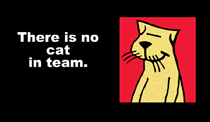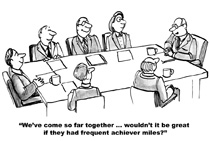 Simply put, high performing teams (HPTs), need members who are high performers. While this may appear to be a blinding flash of the obvious, what may not be so obvious is ensuring that your hiring system has the components it takes to attract high performers. High performers are not just going to come beat your door down. The truth is that high performers are not that easy to find and finding them will become even more difficult because the United States population growth is dropping. The fewer people, the fewer high performers. What can your organization do to help attract the best of the best out of a dwindling supply?
Simply put, high performing teams (HPTs), need members who are high performers. While this may appear to be a blinding flash of the obvious, what may not be so obvious is ensuring that your hiring system has the components it takes to attract high performers. High performers are not just going to come beat your door down. The truth is that high performers are not that easy to find and finding them will become even more difficult because the United States population growth is dropping. The fewer people, the fewer high performers. What can your organization do to help attract the best of the best out of a dwindling supply?
 Your favorite sports team takes the field, court, or ice. Team members are dressed in their respective team uniforms and colors, coaches are on the sidelines, referees are watching every move, the crowd supports their favorite, the sports casters call and analyze every play, and there are great rewards awaiting the winning team. What more could a team want? The better question is, does YOUR have all this?
Your favorite sports team takes the field, court, or ice. Team members are dressed in their respective team uniforms and colors, coaches are on the sidelines, referees are watching every move, the crowd supports their favorite, the sports casters call and analyze every play, and there are great rewards awaiting the winning team. What more could a team want? The better question is, does YOUR have all this?
 To suggest that networking and career building is a new way to build teams may seem a bit odd. However, we stress collaboration to conduct projects. We want team members to share knowledge to help getting tasks completed. We encourage sharing expertise to train, mentor, and coach for our succession planning. When we talk about collaboration, sharing knowledge, and training, how are we to accomplish these without networking and career building?
To suggest that networking and career building is a new way to build teams may seem a bit odd. However, we stress collaboration to conduct projects. We want team members to share knowledge to help getting tasks completed. We encourage sharing expertise to train, mentor, and coach for our succession planning. When we talk about collaboration, sharing knowledge, and training, how are we to accomplish these without networking and career building?
 Organizations promote collaboration, teamwork, work groups and the like. The idea is, of course, to promote creative thinking producing diverse ideas, increase productivity, better problem solving, and other benefits among employees. What organizations seem to be a little less good at promoting is teamwork between it and the employees. What is that teamwork and why does it matter?
Organizations promote collaboration, teamwork, work groups and the like. The idea is, of course, to promote creative thinking producing diverse ideas, increase productivity, better problem solving, and other benefits among employees. What organizations seem to be a little less good at promoting is teamwork between it and the employees. What is that teamwork and why does it matter?
 According to the CEO Economic Outlook Survey Q2 2015, CEOs will begin cutting back on spending and start working on layoffs. Here we go again. The people who need the money will no longer be making any, families will suffer, and the economy will be taking another nose dive. An important question to ask is what will these layoffs, lack of people power, and lost revenues do to your organization? What if there were a more creative way CEOs could keep their employees working, save families, save their communities, save the economy, and boost their organization all at the same time?
According to the CEO Economic Outlook Survey Q2 2015, CEOs will begin cutting back on spending and start working on layoffs. Here we go again. The people who need the money will no longer be making any, families will suffer, and the economy will be taking another nose dive. An important question to ask is what will these layoffs, lack of people power, and lost revenues do to your organization? What if there were a more creative way CEOs could keep their employees working, save families, save their communities, save the economy, and boost their organization all at the same time?
When conducting Tandem Team X-Ray Programs, it becomes clear that teams can be created that would allow employees to use their skills and attributes for real purpose. This helps satisfy the need employees have of wanting purpose in the workplaces. When employees work with purpose, they are more engaged and more productive. Leaders today have many opportunities to create meaning and purpose.
Results of assessments can identify employees with the following skills and attributes. In addition, ideas are presented on ways to help employees put these skills and attributes to good use, help the economy, and provide CEOs with a way to boost the organization.

You solve problems every day. You feel a sense of accomplishment, self-satisfaction, and maybe even relief. But the very next week, the same problem, a similar problem, or a related problem rears its ugly head. You get Déjà vu and wonder what went wrong. You hear yourself saying, “Didn’t I tell them….” “I explained ….” “I thought they heard me say …” Maybe yes and maybe no. If this is happening to you, you may be engaging in event problem solving.
Event problem solving is solving what is happening at the moment with no further investigation. Event problem solving merely applies a band aid to what can be a manifestation of a larger, more deeply rooted issue. These issues can sometimes be the foundation of the culture of an organization. Unfortunately, more likely than not, these are more negative than positive. So how can leadership “see it coming?” When coaching leaders, I will often explain that if you see a problem once, you may take a brief notice of it. If you see the same problem twice, your ears should perk up. If you see that same problem a third time, now you have a trend or pattern. This is how a reoccurring problem formulates and infests an organization. By the time this pattern develops, it is no doubt affecting many aspects of your organization and business. So what is the plan for deeper problem solving?
 When immigrants come to America, they often see opportunities, and many become extraordinarily successful entrepreneurs. Many Americans who grow up with these same opportunities fail to see them and therefore neglect taking advantage of them. One thing we do have in common is resistance to change. While an immigrant might find success, the idea of being on time, for example, is a difficult idea to change for some cultures. The changes dictated by the pandemic have given us all change challenges to wrestle. How will these changes, many of which are here to stay, affect our work culture and what changes do we need to embrace for success?
When immigrants come to America, they often see opportunities, and many become extraordinarily successful entrepreneurs. Many Americans who grow up with these same opportunities fail to see them and therefore neglect taking advantage of them. One thing we do have in common is resistance to change. While an immigrant might find success, the idea of being on time, for example, is a difficult idea to change for some cultures. The changes dictated by the pandemic have given us all change challenges to wrestle. How will these changes, many of which are here to stay, affect our work culture and what changes do we need to embrace for success?
 Building a better career is important to people who want to get ahead and create a better life for themselves and their families. Careers come in all shapes and sizes. Trades people have a career, administrative assistants have a career, real estate agents have a career, CPAs have a career and on and on. Electing not to get an MBA or a Ph.D., does not mean you do not have a career. You most certainly do. For organizations, creating career path programs is an important strategy regardless of the industry or the size of your organization. How can your company be career strategic?
Building a better career is important to people who want to get ahead and create a better life for themselves and their families. Careers come in all shapes and sizes. Trades people have a career, administrative assistants have a career, real estate agents have a career, CPAs have a career and on and on. Electing not to get an MBA or a Ph.D., does not mean you do not have a career. You most certainly do. For organizations, creating career path programs is an important strategy regardless of the industry or the size of your organization. How can your company be career strategic?
 Many organizations conduct mid-year employee performance reviews. Fewer conduct midyear business performance reviews. Most people look forward to neither of these. However neglecting either of these robs you and your organization of valuable information. In addition, linking these two processes can give your people and your organization the jump start it needs, not only for the rest of the year, but for the beginning of the New Year.
Many organizations conduct mid-year employee performance reviews. Fewer conduct midyear business performance reviews. Most people look forward to neither of these. However neglecting either of these robs you and your organization of valuable information. In addition, linking these two processes can give your people and your organization the jump start it needs, not only for the rest of the year, but for the beginning of the New Year.
The idea of “looking back’ has no appeal for many. In fact, one manager at Adobe, commenting on their 1 through 4 employee review rating system, criticizes it as being a “soul crushing exercise.” That’s a pretty brutal description. The HR director dubs the company as “team oriented” and goes on to say that the rating system tended to compare one employee to another, decimating some of their top notch hires and a high turnover resulted after every review cycle. The HR director has now dumped the entire review process in favor of what some are deeming a “new” process. This process is one of more frequent, informal conversations between managers and employees. One organization calls it a “check in.”
This process is not new and has been touted by Herman Aguinis as a valuable performance monument tool for many years. Possibly what is new is gearing this process to the future and not so much to the past. After all, there is nothing we can do to change the past. Here are some ideas on how to utilize the midyear review as a midyear tool for renewal.
 Does your team work together? No, I don’t mean do they cooperate, collaborate, and have a culture of kumbayah. Do they physically work together every day? This is an important question to ask as it can change the way you manage, save you time, and resources.
Does your team work together? No, I don’t mean do they cooperate, collaborate, and have a culture of kumbayah. Do they physically work together every day? This is an important question to ask as it can change the way you manage, save you time, and resources.
Recently, I had the opportunity to deliver a program to a group of mid-level executives, each in a different city and in charge of a different market sector for their organization. The manager, a VP in the organization was intent on teambuilding and that had been his management focus. However, during the program, one of the participants stated aloud that he found no benefit in their weekly teambuilding phone calls. Ouch!
The executive and I looked at his team and he realized that that they don’t work together or even depend on one another for resources or business. While that is true, I pointed out to the manager that the concentration should be on having his team focus on the strategic plan, ensure that each of his managers buys into the vision for the organization, and then drive that vision throughout their own teams. But don’t they still need to collaborate and cooperate? Glad you asked.
 When sitting down to write this blog, the question came to mind, “Do we humans enjoy fear?” The question came up because we (humans) it appears keep piling the fears on, like the fear of black cats, spiders, the unknown, change, and now the future of work. Do we enjoy fear?
When sitting down to write this blog, the question came to mind, “Do we humans enjoy fear?” The question came up because we (humans) it appears keep piling the fears on, like the fear of black cats, spiders, the unknown, change, and now the future of work. Do we enjoy fear?
 We all know that no one individual is totally responsible for the success of an organization or for any project. We also know tht we can’t do everything. It’s not just the time factor, but that we simply do not possess every talent or skill needed for projects to run today’s increasingly complex organizations. Rather a team of diverse people with diverse talents, skills, and attributes are required. Moreover, we are constantly reminded of how much we should appreciate our teammates and their particular brand of talents. Why are strengths so important?
We all know that no one individual is totally responsible for the success of an organization or for any project. We also know tht we can’t do everything. It’s not just the time factor, but that we simply do not possess every talent or skill needed for projects to run today’s increasingly complex organizations. Rather a team of diverse people with diverse talents, skills, and attributes are required. Moreover, we are constantly reminded of how much we should appreciate our teammates and their particular brand of talents. Why are strengths so important?
Why Strengths Are Important
Unless you’ve been under a rock, you are no doubt aware of the work Gallup conducts in the importance of strengths. An article by Tim Clark succinctly explains the study’s findings:
 Do you have spooky team members who haunt you with their behaviors and communication styles? You know, those team members who frighten you because of their aggressive nature. Another spooky team member might be the one who is so flighty you expect to see them flying around the office and they don’t even need a broom! Or how about the strong, silent, team member? You know, the one with the face made of stone. No one can ever tell what they are thinking. Are they plotting, are they happy, or are they hiding some deep, dark and dangerous secret? Or how about the team member who is so literal, will not make a move unless there is a rule involved? Yes, the ones, who take so long to make a decision that you think if you walk by their office, you will see cobwebs growing around them. Here’s the really scary part, one of these is you!
Do you have spooky team members who haunt you with their behaviors and communication styles? You know, those team members who frighten you because of their aggressive nature. Another spooky team member might be the one who is so flighty you expect to see them flying around the office and they don’t even need a broom! Or how about the strong, silent, team member? You know, the one with the face made of stone. No one can ever tell what they are thinking. Are they plotting, are they happy, or are they hiding some deep, dark and dangerous secret? Or how about the team member who is so literal, will not make a move unless there is a rule involved? Yes, the ones, who take so long to make a decision that you think if you walk by their office, you will see cobwebs growing around them. Here’s the really scary part, one of these is you!
No matter which one is you, you must know how to handle the other spooky types. So who should change, you or them? Well no one needs to change or morph into some other haunting entity or become a skeleton of yourself. Rather, the idea is to adapt. Let’s look at each of these characters and see what might work to help these spooky types interact with one another without creating a horror movie.
 Every team member brings value to the table. Some team members are more tech savvy than others. Some are better at handling conflict than others. Some are better at problem solving. Some have a wide range of experiences, and on and on. Different talents cut across the generational spectrum. For example, while I’m no “whiz kid” when it comes to technology, I’ve met many far younger who are not as tech savvy as I am. Some younger people may have more experience at customer service than someone older. So let’s clear the table about what generation is better at one thing or the other.
Every team member brings value to the table. Some team members are more tech savvy than others. Some are better at handling conflict than others. Some are better at problem solving. Some have a wide range of experiences, and on and on. Different talents cut across the generational spectrum. For example, while I’m no “whiz kid” when it comes to technology, I’ve met many far younger who are not as tech savvy as I am. Some younger people may have more experience at customer service than someone older. So let’s clear the table about what generation is better at one thing or the other.
What team members should have are shared values and commitment to the goal and to one another. What this article addresses are the specific, useable talents that can be put to use to enhance the bottom line, increase employee engagement, and help your employees have meaningful work. Let’s look at a few examples.
Let’s say you want to build a team or special task force to seek out future trends. You want them to do research, collect the data, and present it to the executive team or even the Board. What talents and attributes will these team members require for this type of task? Here are a few ideas of the type of people to select…
 Curiosity killed the cat. How curious is that? What has the cat idiom got to do with business or your team? Well, the curious thing is – a lot! Unfortunately, curiosity has, at times, been given a bad name as in killing cats or opening Pandora’s box and creating chaos. Our children may sometimes drive us bananas with their “Why?” questions. As adults, we don’t ask “Why?” questions because we don’t want to look silly. What about poor Eve from the Bible with the apple, and the snake, and the nakedness? OH MY! Your team needs curiosity to become high performers. Are you curious to know how that works?
Curiosity killed the cat. How curious is that? What has the cat idiom got to do with business or your team? Well, the curious thing is – a lot! Unfortunately, curiosity has, at times, been given a bad name as in killing cats or opening Pandora’s box and creating chaos. Our children may sometimes drive us bananas with their “Why?” questions. As adults, we don’t ask “Why?” questions because we don’t want to look silly. What about poor Eve from the Bible with the apple, and the snake, and the nakedness? OH MY! Your team needs curiosity to become high performers. Are you curious to know how that works?
 We all have them. Some can’t see them at all. Some of us have more of them than others. Some of us try to deny them. Some of us try to work around them. Some of us try to work with them. Some of us see them, work to reduce them, and help our teams do the same. Do you or your team fit any of these categories?
We all have them. Some can’t see them at all. Some of us have more of them than others. Some of us try to deny them. Some of us try to work around them. Some of us try to work with them. Some of us see them, work to reduce them, and help our teams do the same. Do you or your team fit any of these categories?
 To begin, it’s wise to determine if your team needs a teambuilding program in the first place. Conducting a teambuilding session because, “We haven’t done one in a while.” or holding teambuilding sessions such as a romp at the local bowling alley or flying across the forest on a zip line are not all that successful. Moreover, these really don’t work if they are supposed to be seen as a reward for hard work. In addition, there are many more creative ways to help build and bond your team. So before jumping in to teambuilding willy nilly, here are some questions to ask that will help determine if a teambuilding session is needed.
To begin, it’s wise to determine if your team needs a teambuilding program in the first place. Conducting a teambuilding session because, “We haven’t done one in a while.” or holding teambuilding sessions such as a romp at the local bowling alley or flying across the forest on a zip line are not all that successful. Moreover, these really don’t work if they are supposed to be seen as a reward for hard work. In addition, there are many more creative ways to help build and bond your team. So before jumping in to teambuilding willy nilly, here are some questions to ask that will help determine if a teambuilding session is needed.
Determining if Your Team Needs a Team building Session
 A recent study by the Society of Human Resource Management posits that one of the technical skills most lacking in the workplace is data analysis. In terms of soft skills there are even more missing pieces such as problem solving, innovation, creativity, the ability to deal with complexity and ambiguity, communication, and critical thinking. Having this bit of information begs three questions. First, why are these elements of critical thinking important to you and your team? Second, why are they missing? Third, if they are important, yet missing, how do you ensure that your team has the critical skill of critical thinking?
A recent study by the Society of Human Resource Management posits that one of the technical skills most lacking in the workplace is data analysis. In terms of soft skills there are even more missing pieces such as problem solving, innovation, creativity, the ability to deal with complexity and ambiguity, communication, and critical thinking. Having this bit of information begs three questions. First, why are these elements of critical thinking important to you and your team? Second, why are they missing? Third, if they are important, yet missing, how do you ensure that your team has the critical skill of critical thinking?
 Often in this blog topics center around hiring the right person. But once on board, selecting the right people for teams is just as important. While you want to give the makeup of the larger team serious consideration, the makeup of work teams can be critical. In other words, teamwork is where the rubber meets the road.
Often in this blog topics center around hiring the right person. But once on board, selecting the right people for teams is just as important. While you want to give the makeup of the larger team serious consideration, the makeup of work teams can be critical. In other words, teamwork is where the rubber meets the road.
The reason for this is that in the larger organizational team the bigger picture may be the focus in terms of theories, strategies, and even brainstorming. While in smaller or work teams, the work is the dissecting, organizing, testing, and implementation of those theories, strategies, and innovative ideas.
The point is that for a group of people we call teams to be able to work together, the right chemistry of personalities, skills, talents, and attributes must come together much like an orchestra plays in harmony by delivering the right notes, at the right level, at the right time. Notice I didn’t say without conflict.
 If you like to do research, leadership is one of those topics that can take you down as many rabbit holes as you care to pursue. Opinions about what leadership is, how to lead, what leadership looks like, and if you are leading correctly are no different. In ancient times, kings, monarchs, and rulers were in vogue with the term leader (for us common people) arriving in the 19th century. Today Organizational Leadership and its numerous facets are the focus. So why a sphere of leadership?
If you like to do research, leadership is one of those topics that can take you down as many rabbit holes as you care to pursue. Opinions about what leadership is, how to lead, what leadership looks like, and if you are leading correctly are no different. In ancient times, kings, monarchs, and rulers were in vogue with the term leader (for us common people) arriving in the 19th century. Today Organizational Leadership and its numerous facets are the focus. So why a sphere of leadership?
 Simply put, high performing teams (HPTs), need members who are high performers. While this may appear to be a blinding flash of the obvious, what may not be so obvious is ensuring that your hiring system has the components it takes to attract high performers. High performers are not just going to come beat your door down. The truth is that high performers are not that easy to find and finding them will become even more difficult because the United States population growth is dropping. The fewer people, the fewer high performers. What can your organization do to help attract the best of the best out of a dwindling supply?
Simply put, high performing teams (HPTs), need members who are high performers. While this may appear to be a blinding flash of the obvious, what may not be so obvious is ensuring that your hiring system has the components it takes to attract high performers. High performers are not just going to come beat your door down. The truth is that high performers are not that easy to find and finding them will become even more difficult because the United States population growth is dropping. The fewer people, the fewer high performers. What can your organization do to help attract the best of the best out of a dwindling supply? Your favorite sports team takes the field, court, or ice. Team members are dressed in their respective team uniforms and colors, coaches are on the sidelines, referees are watching every move, the crowd supports their favorite, the sports casters call and analyze every play, and there are great rewards awaiting the winning team. What more could a team want? The better question is, does YOUR have all this?
Your favorite sports team takes the field, court, or ice. Team members are dressed in their respective team uniforms and colors, coaches are on the sidelines, referees are watching every move, the crowd supports their favorite, the sports casters call and analyze every play, and there are great rewards awaiting the winning team. What more could a team want? The better question is, does YOUR have all this? To suggest that networking and career building is a new way to build teams may seem a bit odd. However, we stress collaboration to conduct projects. We want team members to share knowledge to help getting tasks completed. We encourage sharing expertise to train, mentor, and coach for our succession planning. When we talk about collaboration, sharing knowledge, and training, how are we to accomplish these without networking and career building?
To suggest that networking and career building is a new way to build teams may seem a bit odd. However, we stress collaboration to conduct projects. We want team members to share knowledge to help getting tasks completed. We encourage sharing expertise to train, mentor, and coach for our succession planning. When we talk about collaboration, sharing knowledge, and training, how are we to accomplish these without networking and career building? Organizations promote collaboration, teamwork, work groups and the like. The idea is, of course, to promote creative thinking producing diverse ideas, increase productivity, better problem solving, and other benefits among employees. What organizations seem to be a little less good at promoting is teamwork between it and the employees. What is that teamwork and why does it matter?
Organizations promote collaboration, teamwork, work groups and the like. The idea is, of course, to promote creative thinking producing diverse ideas, increase productivity, better problem solving, and other benefits among employees. What organizations seem to be a little less good at promoting is teamwork between it and the employees. What is that teamwork and why does it matter? According to the CEO Economic Outlook Survey Q2 2015, CEOs will begin cutting back on spending and start working on layoffs. Here we go again. The people who need the money will no longer be making any, families will suffer, and the economy will be taking another nose dive. An important question to ask is what will these layoffs, lack of people power, and lost revenues do to your organization? What if there were a more creative way CEOs could keep their employees working, save families, save their communities, save the economy, and boost their organization all at the same time?
According to the CEO Economic Outlook Survey Q2 2015, CEOs will begin cutting back on spending and start working on layoffs. Here we go again. The people who need the money will no longer be making any, families will suffer, and the economy will be taking another nose dive. An important question to ask is what will these layoffs, lack of people power, and lost revenues do to your organization? What if there were a more creative way CEOs could keep their employees working, save families, save their communities, save the economy, and boost their organization all at the same time?
 When immigrants come to America, they often see opportunities, and many become extraordinarily successful entrepreneurs. Many Americans who grow up with these same opportunities fail to see them and therefore neglect taking advantage of them. One thing we do have in common is resistance to change. While an immigrant might find success, the idea of being on time, for example, is a difficult idea to change for some cultures. The changes dictated by the pandemic have given us all change challenges to wrestle. How will these changes, many of which are here to stay, affect our work culture and what changes do we need to embrace for success?
When immigrants come to America, they often see opportunities, and many become extraordinarily successful entrepreneurs. Many Americans who grow up with these same opportunities fail to see them and therefore neglect taking advantage of them. One thing we do have in common is resistance to change. While an immigrant might find success, the idea of being on time, for example, is a difficult idea to change for some cultures. The changes dictated by the pandemic have given us all change challenges to wrestle. How will these changes, many of which are here to stay, affect our work culture and what changes do we need to embrace for success? Building a better career is important to people who want to get ahead and create a better life for themselves and their families. Careers come in all shapes and sizes. Trades people have a career, administrative assistants have a career, real estate agents have a career, CPAs have a career and on and on. Electing not to get an MBA or a Ph.D., does not mean you do not have a career. You most certainly do. For organizations, creating career path programs is an important strategy regardless of the industry or the size of your organization. How can your company be career strategic?
Building a better career is important to people who want to get ahead and create a better life for themselves and their families. Careers come in all shapes and sizes. Trades people have a career, administrative assistants have a career, real estate agents have a career, CPAs have a career and on and on. Electing not to get an MBA or a Ph.D., does not mean you do not have a career. You most certainly do. For organizations, creating career path programs is an important strategy regardless of the industry or the size of your organization. How can your company be career strategic? Many organizations conduct mid-year employee performance reviews. Fewer conduct midyear business performance reviews. Most people look forward to neither of these. However neglecting either of these robs you and your organization of valuable information. In addition, linking these two processes can give your people and your organization the jump start it needs, not only for the rest of the year, but for the beginning of the New Year.
Many organizations conduct mid-year employee performance reviews. Fewer conduct midyear business performance reviews. Most people look forward to neither of these. However neglecting either of these robs you and your organization of valuable information. In addition, linking these two processes can give your people and your organization the jump start it needs, not only for the rest of the year, but for the beginning of the New Year. Does your team work together? No, I don’t mean do they cooperate, collaborate, and have a culture of kumbayah. Do they physically work together every day? This is an important question to ask as it can change the way you manage, save you time, and resources.
Does your team work together? No, I don’t mean do they cooperate, collaborate, and have a culture of kumbayah. Do they physically work together every day? This is an important question to ask as it can change the way you manage, save you time, and resources. When sitting down to write this blog, the question came to mind, “Do we humans enjoy fear?” The question came up because we (humans) it appears keep piling the fears on, like the fear of black cats, spiders, the unknown, change, and now the future of work. Do we enjoy fear?
When sitting down to write this blog, the question came to mind, “Do we humans enjoy fear?” The question came up because we (humans) it appears keep piling the fears on, like the fear of black cats, spiders, the unknown, change, and now the future of work. Do we enjoy fear? We all know that no one individual is totally responsible for the success of an organization or for any project. We also know tht we can’t do everything. It’s not just the time factor, but that we simply do not possess every talent or skill needed for projects to run today’s increasingly complex organizations. Rather a team of diverse people with diverse talents, skills, and attributes are required. Moreover, we are constantly reminded of how much we should appreciate our teammates and their particular brand of talents. Why are strengths so important?
We all know that no one individual is totally responsible for the success of an organization or for any project. We also know tht we can’t do everything. It’s not just the time factor, but that we simply do not possess every talent or skill needed for projects to run today’s increasingly complex organizations. Rather a team of diverse people with diverse talents, skills, and attributes are required. Moreover, we are constantly reminded of how much we should appreciate our teammates and their particular brand of talents. Why are strengths so important? Do you have spooky team members who haunt you with their behaviors and communication styles? You know, those team members who frighten you because of their aggressive nature. Another spooky team member might be the one who is so flighty you expect to see them flying around the office and they don’t even need a broom! Or how about the strong, silent, team member? You know, the one with the face made of stone. No one can ever tell what they are thinking. Are they plotting, are they happy, or are they hiding some deep, dark and dangerous secret? Or how about the team member who is so literal, will not make a move unless there is a rule involved? Yes, the ones, who take so long to make a decision that you think if you walk by their office, you will see cobwebs growing around them. Here’s the really scary part, one of these is you!
Do you have spooky team members who haunt you with their behaviors and communication styles? You know, those team members who frighten you because of their aggressive nature. Another spooky team member might be the one who is so flighty you expect to see them flying around the office and they don’t even need a broom! Or how about the strong, silent, team member? You know, the one with the face made of stone. No one can ever tell what they are thinking. Are they plotting, are they happy, or are they hiding some deep, dark and dangerous secret? Or how about the team member who is so literal, will not make a move unless there is a rule involved? Yes, the ones, who take so long to make a decision that you think if you walk by their office, you will see cobwebs growing around them. Here’s the really scary part, one of these is you! Every team member brings value to the table. Some team members are more tech savvy than others. Some are better at handling conflict than others. Some are better at problem solving. Some have a wide range of experiences, and on and on. Different talents cut across the generational spectrum. For example, while I’m no “whiz kid” when it comes to technology, I’ve met many far younger who are not as tech savvy as I am. Some younger people may have more experience at customer service than someone older. So let’s clear the table about what generation is better at one thing or the other.
Every team member brings value to the table. Some team members are more tech savvy than others. Some are better at handling conflict than others. Some are better at problem solving. Some have a wide range of experiences, and on and on. Different talents cut across the generational spectrum. For example, while I’m no “whiz kid” when it comes to technology, I’ve met many far younger who are not as tech savvy as I am. Some younger people may have more experience at customer service than someone older. So let’s clear the table about what generation is better at one thing or the other. Curiosity killed the cat. How curious is that? What has the cat idiom got to do with business or your team? Well, the curious thing is – a lot! Unfortunately, curiosity has, at times, been given a bad name as in killing cats or opening Pandora’s box and creating chaos. Our children may sometimes drive us bananas with their “Why?” questions. As adults, we don’t ask “Why?” questions because we don’t want to look silly. What about poor Eve from the Bible with the apple, and the snake, and the nakedness? OH MY! Your team needs curiosity to become high performers. Are you curious to know how that works?
Curiosity killed the cat. How curious is that? What has the cat idiom got to do with business or your team? Well, the curious thing is – a lot! Unfortunately, curiosity has, at times, been given a bad name as in killing cats or opening Pandora’s box and creating chaos. Our children may sometimes drive us bananas with their “Why?” questions. As adults, we don’t ask “Why?” questions because we don’t want to look silly. What about poor Eve from the Bible with the apple, and the snake, and the nakedness? OH MY! Your team needs curiosity to become high performers. Are you curious to know how that works? We all have them. Some can’t see them at all. Some of us have more of them than others. Some of us try to deny them. Some of us try to work around them. Some of us try to work with them. Some of us see them, work to reduce them, and help our teams do the same. Do you or your team fit any of these categories?
We all have them. Some can’t see them at all. Some of us have more of them than others. Some of us try to deny them. Some of us try to work around them. Some of us try to work with them. Some of us see them, work to reduce them, and help our teams do the same. Do you or your team fit any of these categories? To begin, it’s wise to determine if your team needs a teambuilding program in the first place. Conducting a teambuilding session because, “We haven’t done one in a while.” or holding teambuilding sessions such as a romp at the local bowling alley or flying across the forest on a zip line are not all that successful. Moreover, these really don’t work if they are supposed to be seen as a reward for hard work. In addition, there are many more creative ways to help build and bond your team. So before jumping in to teambuilding willy nilly, here are some questions to ask that will help determine if a teambuilding session is needed.
To begin, it’s wise to determine if your team needs a teambuilding program in the first place. Conducting a teambuilding session because, “We haven’t done one in a while.” or holding teambuilding sessions such as a romp at the local bowling alley or flying across the forest on a zip line are not all that successful. Moreover, these really don’t work if they are supposed to be seen as a reward for hard work. In addition, there are many more creative ways to help build and bond your team. So before jumping in to teambuilding willy nilly, here are some questions to ask that will help determine if a teambuilding session is needed. A recent study by the Society of Human Resource Management posits that one of the technical skills most lacking in the workplace is data analysis. In terms of soft skills there are even more missing pieces such as problem solving, innovation, creativity, the ability to deal with complexity and ambiguity, communication, and critical thinking. Having this bit of information begs three questions. First, why are these elements of critical thinking important to you and your team? Second, why are they missing? Third, if they are important, yet missing, how do you ensure that your team has the critical skill of critical thinking?
A recent study by the Society of Human Resource Management posits that one of the technical skills most lacking in the workplace is data analysis. In terms of soft skills there are even more missing pieces such as problem solving, innovation, creativity, the ability to deal with complexity and ambiguity, communication, and critical thinking. Having this bit of information begs three questions. First, why are these elements of critical thinking important to you and your team? Second, why are they missing? Third, if they are important, yet missing, how do you ensure that your team has the critical skill of critical thinking? Often in this blog topics center around hiring the right person. But once on board, selecting the right people for teams is just as important. While you want to give the makeup of the larger team serious consideration, the makeup of work teams can be critical. In other words, teamwork is where the rubber meets the road.
Often in this blog topics center around hiring the right person. But once on board, selecting the right people for teams is just as important. While you want to give the makeup of the larger team serious consideration, the makeup of work teams can be critical. In other words, teamwork is where the rubber meets the road. If you like to do research, leadership is one of those topics that can take you down as many rabbit holes as you care to pursue. Opinions about what leadership is, how to lead, what leadership looks like, and if you are leading correctly are no different. In ancient times, kings, monarchs, and rulers were in vogue with the term leader (for us common people) arriving in the 19th century. Today Organizational Leadership and its numerous facets are the focus. So why a sphere of leadership?
If you like to do research, leadership is one of those topics that can take you down as many rabbit holes as you care to pursue. Opinions about what leadership is, how to lead, what leadership looks like, and if you are leading correctly are no different. In ancient times, kings, monarchs, and rulers were in vogue with the term leader (for us common people) arriving in the 19th century. Today Organizational Leadership and its numerous facets are the focus. So why a sphere of leadership?